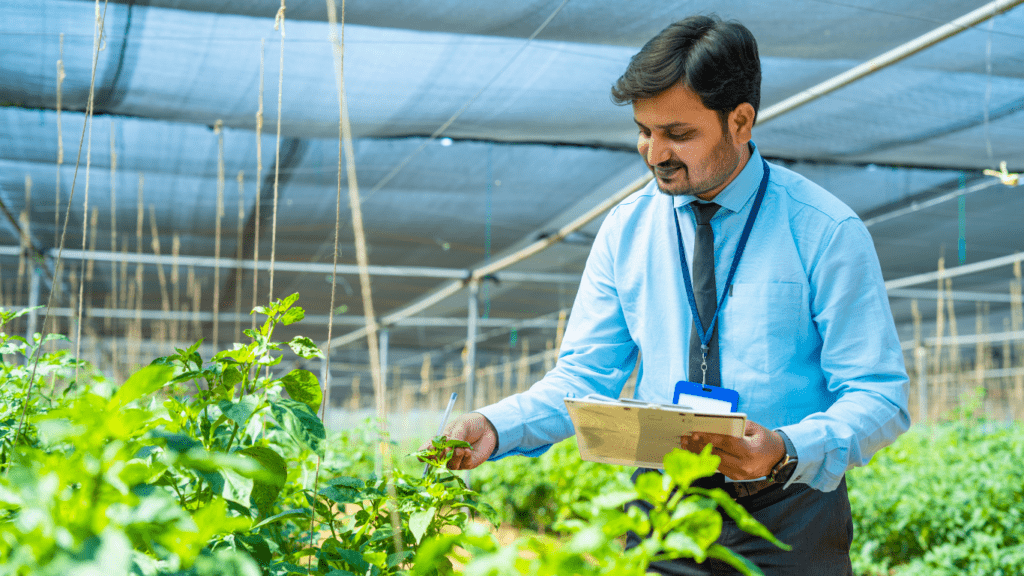In today’s fast-paced world, technology has revolutionized the way we approach urban farming. From vertical gardening systems to automated irrigation methods, innovations in technology are reshaping the landscape of modern agriculture. As an avid supporter of sustainable practices, I’ve witnessed firsthand how technology is enhancing productivity and efficiency in urban farming.
In this article, I’ll delve into the pivotal role that technology plays in modern urban farming practices. With the integration of smart sensors, drones, and data analytics, urban farmers can now optimize resource utilization and monitor crop health with precision. Join me as we explore the exciting intersection of technology and agriculture, paving the way for a greener and more sustainable future in our urban centers.
The Evolution of Urban Farming
From Traditional Practices to Modern Techniques:
Transitioning from age-old farming methods to cutting-edge technologies has revolutionized urban agriculture. Traditional practices, once prevalent, have given way to a new era of innovation in urban farming. Innovations such as vertical gardening systems and automated irrigation methods have reshaped the landscape, paving the way for increased productivity and sustainability in urban areas.
Key Technologies Transforming Urban Agriculture
Urban agriculture has witnessed a remarkable transformation through the integration of advanced technologies. These innovations have redefined farming methods, enhancing efficiency and sustainability in urban settings. Below are some key technologies that are revolutionizing modern urban farming:
Hydroponics and Aeroponics
Hydroponics and aeroponics are cutting-edge techniques that facilitate plant growth without the use of soil. In hydroponic systems, plants grow in nutrient-rich water solutions, while aeroponics involves growing plants in an air/mist environment. These methods allow for space-efficient cultivation with reduced water consumption compared to traditional farming.
Vertical Farming Systems
Vertical farming systems utilize stacked layers to cultivate crops in vertical structures, maximizing space utilization in urban environments. By incorporating controlled environments with efficient lighting and tailored nutrient delivery systems, vertical farms can produce a higher yield per square foot than conventional farms. This technology addresses land scarcity issues in cities while promoting sustainable food production.
IoT and Automation in Farm Management
The Internet of Things (IoT) and automation play a crucial role in optimizing farm management practices. IoT devices such as smart sensors enable real-time monitoring of crop conditions, soil moisture levels, and environmental factors. Automation systems control tasks like irrigation, fertilization, and climate regulation, enhancing precision and reducing resource wastage. By harnessing data analytics, urban farmers can make data-driven decisions to increase productivity and sustainability.
These technologies represent the forefront of innovation in urban agriculture, offering scalable solutions to meet the growing demand for fresh, locally grown produce in urban areas. By leveraging these advancements, urban farmers can achieve higher yields, minimize environmental impact, and contribute to a more resilient and sustainable food system.
Benefits of Technology in Urban Farming
Technology plays a crucial role in revolutionizing modern urban farming practices, offering a myriad of benefits that contribute to the sustainability and efficiency of agricultural operations.
- Increased Crop Yield and Efficiency
Implementing advanced technologies such as vertical farming systems and hydroponics in urban agriculture has significantly boosted crop yields. These methods provide optimal conditions for plant growth, allowing for year-round cultivation and increased harvest cycles. By leveraging technology, urban farmers can maximize the use of limited space, water, and resources, thereby enhancing overall efficiency in crop production. - Reduced Environmental Impact
The integration of technology in urban farming has led to a reduction in the sector’s environmental footprint. Techniques like aeroponics and IoT-enabled irrigation systems help conserve water by delivering precise amounts directly to plant roots, minimizing wastage. Additionally, the use of automation and data analytics optimizes resource management, leading to decreased energy consumption and greenhouse gas emissions. By adopting sustainable technologies, urban farms can mitigate negative environmental effects and promote eco-friendly practices.
Accessibility and Education Opportunities
Technological advancements have made urban farming more accessible and educational for individuals in urban areas. Mobile apps and online platforms provide valuable resources and guidance for aspiring urban farmers, offering insights on best practices, crop management, and troubleshooting tips. Furthermore, these technologies facilitate community engagement and educational initiatives, fostering a culture of awareness and participation in sustainable food production. By leveraging technology, urban farming becomes a collaborative and informative endeavor that empowers individuals to take an active role in shaping a more sustainable future.
Challenges and Solutions
Technical Challenges and Innovations
In modern urban farming, one of the key technical challenges is the high initial cost of implementing advanced technologies. Setting up vertical farming systems or hydroponic facilities can be expensive. However, a solution to this challenge is the development of more cost-effective technologies and equipment specifically designed for urban farming. Companies are now producing modular and affordable solutions that make it easier for urban farmers to adopt these innovative methods without breaking the bank.
Economic and Policy Barriers
Economic challenges and policy barriers also pose significant hurdles for urban farmers. Limited access to capital for investment in technology and infrastructure can hinder the growth of urban farming initiatives. Moreover, unclear or restrictive regulations related to land use and agricultural practices in urban areas can impede the expansion of urban farming projects. To address these issues, governments and organizations are working towards creating supportive policies, providing financial incentives, and facilitating partnerships to promote the development of urban farming while ensuring compliance with regulations.
The Future of Urban Farming with Technology
Innovations on the Horizon
As technology continues to advance, the future of urban farming looks promising with exciting innovations on the horizon. Vertical farming, a method that involves growing crops in vertically stacked layers, is gaining traction in urban areas. This approach maximizes space utilization and reduces water consumption, offering a sustainable solution to urban food production challenges.
Integrating Technology with Urban Planning
The integration of technology with urban planning is crucial for the success of modern urban farming initiatives. By leveraging data analytics and IoT devices, urban planners can optimize the design of urban spaces to incorporate green infrastructure and support the development of urban agriculture. This synergistic approach not only enhances food security in cities but also promotes environmental sustainability and resilience in urban ecosystems.

 Gabriella Irvine is a dedicated team member contributing to the growth and development of the project. With a background in environmental science, she brings valuable insights into sustainable practices and community engagement. Gabriella's passion for urban sustainability drives her to collaborate closely with other team members, ensuring that innovative strategies are effectively implemented. Her commitment to education and outreach helps empower individuals and communities to adopt eco-friendly lifestyles, making her an essential asset in fostering positive change within the project.
Gabriella Irvine is a dedicated team member contributing to the growth and development of the project. With a background in environmental science, she brings valuable insights into sustainable practices and community engagement. Gabriella's passion for urban sustainability drives her to collaborate closely with other team members, ensuring that innovative strategies are effectively implemented. Her commitment to education and outreach helps empower individuals and communities to adopt eco-friendly lifestyles, making her an essential asset in fostering positive change within the project.